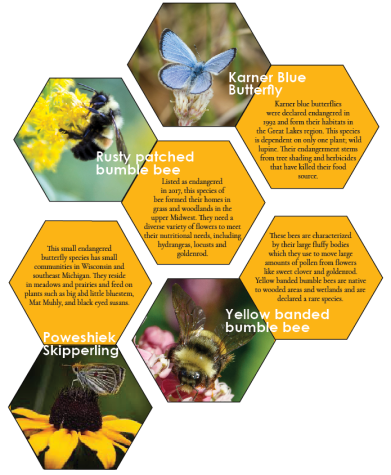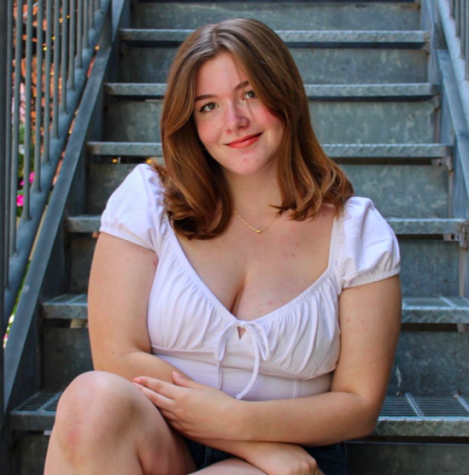Save the bees and butterflies

Over the past couple of years, the term “save the bees” has been floating around popular culture. While it may be easy to brush off this issue, the endangerment of pollinators threatens the ecosystems and crops in America.
A study at Michigan State University found that many bee and butterfly species have declined dramatically in the last 20 years. The typical yellow bumble bee population has declined by 65% since the year 2000. Other species, such as the rusty patched bumble bee and the Karner blue butterfly, are on the endangered species list in the state of Michigan due to a population decline rate of over 99%.

This population decline is alarming because of the significant role pollinators play in our ecosystems. Bees and butterflies are necessary for plant reproduction and their efforts create the seeds and fruits that feed many other different species, including humans. Pollinators are vital to the production of crops in our country and added $15 billion in value to crops such as nuts, fruits and vegetables by transferring pollen from plant to plant which makes crops grow more plentiful.
Pollinator populations are dropping quickly due to two main reasons: habitat and food loss. Many endangered bees and butterflies in Michigan collect pollen from specific plants that are not abundant enough to support the species.
This is mainly because the spaces where they once made their nests have been converted into agricultural, commercial or residential spaces. When this land is taken over, they lose access to the flowers that make up their diet and habitat.
Another threat to pollinators are the pesticides used commercially in crops and domestically in home gardens. Pesticide exposure can take out entire colonies of bees and make it harder for a new queen to take over. This creates a cycle that leads to the endangerment of many species of bees.
Planting native flowers and reducing the usage of pesticides are ways everybody can help grow the population of pollinators. Even just a couple of plants can help repopulate the pollinators and reverse this issue.

Alyssa VanHook is the creative editor for Uncaged and has been on staff for three years. She is vice president of the senior class and a member of student...





